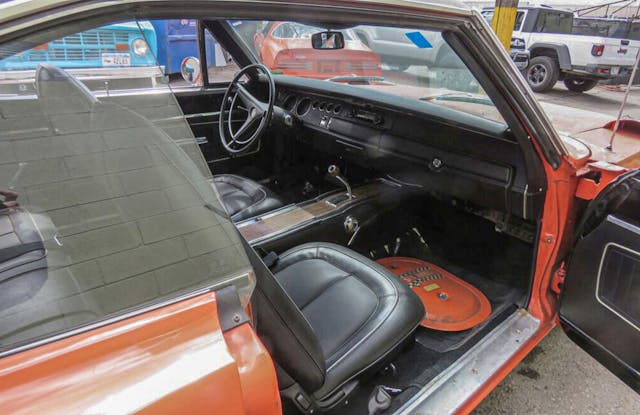Media | Articles
A few scuffs couldn’t ding the value of this low-mile Superbird
VanDerBrink Auctions’ June sale of a 90-car collection of ’50s classics and ’60s muscle had plenty of chrome, fins, and multi-carved V-8s to drool over, yet one low-production Mopar stood out to bidders: A 1970 Plymouth Superbird. Despite being dinged, scuffed, and faded, the 440-powered muscle car was sold for $203,000. That’s 10 percent more than the model’s current #4 (Fair) condition value of $183K.
Mopar engineers created the 1970 Plymouth Superbird and its predecessor, the 1969 Dodge Charger Daytona, with NASCAR superspeedways in mind. The so-called “wing cars” featured long, sloped noses and new rear windows that reduced drag, along with tall tails that increased high-speed stability. Despite what’s often parroted on forums and in some automotive circles, the wing was placed where it would actually do some good; it had nothing to do with allowing the trunk to open. Aerodynamicists don’t care about your luggage.

Plymouth’s aerodynamic advantage helped Bobby Isaac win the 1970 NASCAR championship as Mopar wing cars dominated the season, taking the checkered flag in 38 of 48 races that season. In a bid to end the aerodynamic shenanigans and get NASCAR racers looking like actual cars, the wing cars were forced to use smaller engines for the 1971 season.
The winged warriors all but disappeared in favor of the new, fuselage-body Mopars that debuted in 1971. Just one wing car competed in that year’s Daytona 500, where it managed to surprise a lot of skeptics: It took on the 7.0-liter field powered by a 5.0-liter small-block and raced to a seventh-place finish.

This particular example is the road-going version of the Superbird, sold in dealerships in limited numbers to homologate the wings cars for NASCAR competition. Somewhere around 2000 were produced, with the majority receiving a 440 big-block with a single four-barrel carb. The 440 Six Barrel version, which added triple two-barrel Holley carbs for a total output of 390 hp, wasn’t as rare as the dual-four-barrel 426 Hemi car, but the larger carburetor does add significantly to the value of a 440-powered Superbird.
Marketplace
Buy and sell classics with confidence
Collector Jay Soneoff purchased the car from the son of the original owners, who kept plenty of the car’s documentation, including its built sheet and original title. Cars are only original once, so this kind of time capsule represents an incredibly rare opportunity. As Hagerty valuation specialist Greg Ingold notes, “This sale shows how documentation and a history can boost value. Add in the original “as found” condition, and this Superbird checks all the boxes for the barn-find romantic.”
With just 57,178 miles on the odometer and desirable options including its Tor-Red paint and Tic Toc Tach, it’s not too surprising that this piece of muscle car history pulled in more than $200,000.
***
Check out the Hagerty Media homepage so you don’t miss a single story, or better yet, bookmark it. To get our best stories delivered right to your inbox, subscribe to our newsletters.






Never mind the bird… there appeared to be some great restoration projects in that auction. WIsh I had the garage space… and the money… and the time. lol
Not shocking this car sold for a bunch. They are just going for crazy money.